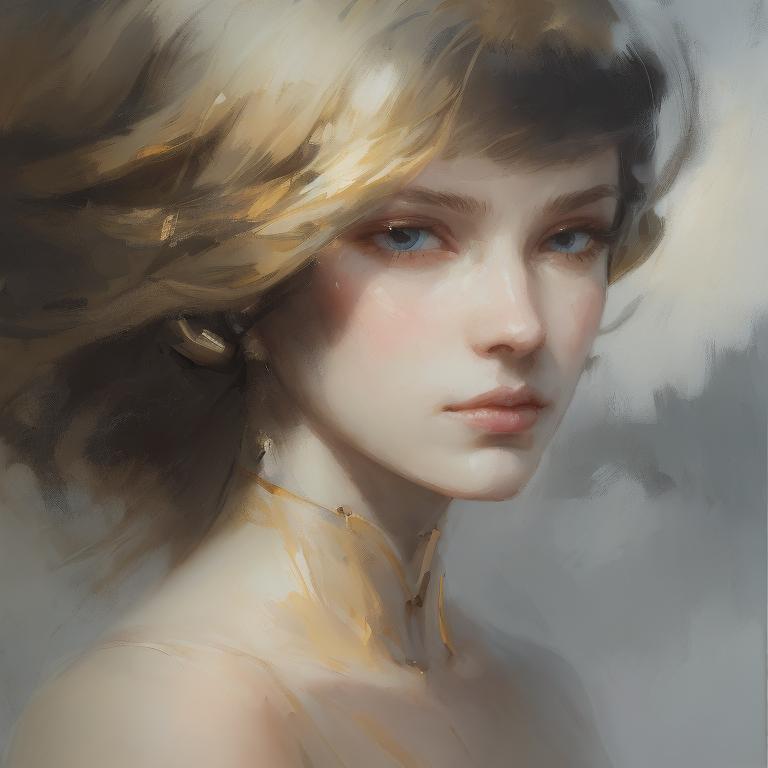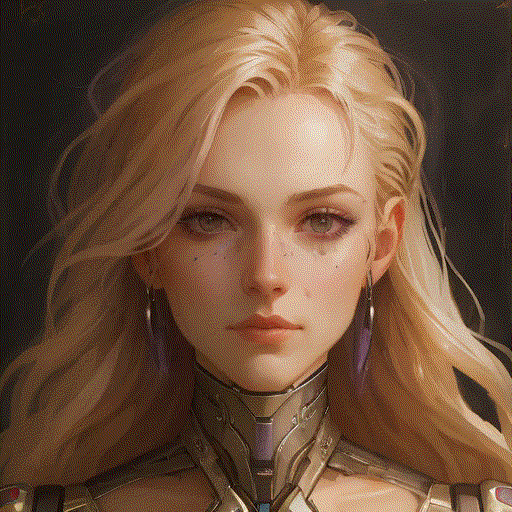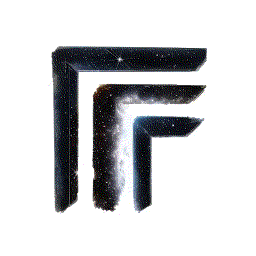latent-consistency-model
Maintainer: fofr

920

| Property | Value |
|---|---|
| Model Link | View on Replicate |
| API Spec | View on Replicate |
| Github Link | View on Github |
| Paper Link | No paper link provided |
Get summaries of the top AI models delivered straight to your inbox:
Model overview
The latent-consistency-model is a powerful AI model developed by fofr that offers super-fast image generation at 0.6s per image. It combines several key capabilities, including img2img, large batching, and Canny controlnet support. This model can be seen as a refinement and extension of similar models like sdxl-controlnet-lora and instant-id-multicontrolnet, which also leverage ControlNet technology for enhanced image generation.
Model inputs and outputs
The latent-consistency-model accepts a variety of inputs, including a prompt, image, width, height, number of images, guidance scale, and various ControlNet-related parameters. The model's outputs are an array of generated image URLs.
Inputs
- Prompt: The text prompt that describes the desired image
- Image: An input image for img2img
- Width: The width of the output image
- Height: The height of the output image
- Num Images: The number of images to generate per prompt
- Guidance Scale: The scale for classifier-free guidance
- Control Image: An image for ControlNet conditioning
- Prompt Strength: The strength of the prompt when using img2img
- Sizing Strategy: How to resize images, such as by width/height or based on input/control image
- LCM Origin Steps: The number of steps for the LCM origin
- Canny Low Threshold: The low threshold for the Canny edge detector
- Num Inference Steps: The number of denoising steps
- Canny High Threshold: The high threshold for the Canny edge detector
- Control Guidance Start: The start of the ControlNet guidance
- Control Guidance End: The end of the ControlNet guidance
- Controlnet Conditioning Scale: The scale for ControlNet conditioning
Outputs
- An array of URLs for the generated images
Capabilities
The latent-consistency-model is capable of generating high-quality images at a lightning-fast pace, making it an excellent choice for applications that require real-time or batch image generation. Its integration of ControlNet technology allows for enhanced control over the generated images, enabling users to influence the final output using various conditioning parameters.
What can I use it for?
The latent-consistency-model can be used in a variety of applications, such as:
- Rapid prototyping and content creation for designers, artists, and marketing teams
- Generative art projects that require quick turnaround times
- Integration into web applications or mobile apps that need to generate images on the fly
- Exploration of different artistic styles and visual concepts through the use of ControlNet conditioning
Things to try
One interesting aspect of the latent-consistency-model is its ability to generate images with a high degree of consistency, even when using different input parameters. This can be especially useful for creating cohesive visual styles or generating variations on a theme. Experiment with different prompts, image inputs, and ControlNet settings to see how the model responds and explore the possibilities for your specific use case.
This summary was produced with help from an AI and may contain inaccuracies - check out the links to read the original source documents!
Related Models

lcm-animation

18
The lcm-animation model is a fast animation tool that uses a latent consistency model (LCM) to create smooth, high-quality animations from input images or prompts. This model is similar to the latent-consistency-model by the same creator, which also uses LCM with img2img, large batching, and Canny control net for super-fast animation generation. Other related models include MagicAnimate, which focuses on temporally consistent human image animation using a diffusion model, and AnimateLCM, a cartoon 3D model for animation. Model inputs and outputs The lcm-animation model takes a variety of inputs, including a starting image or prompt, seed, width, height, end prompt, number of iterations, start prompt, and various control parameters for the Canny edge detection and guidance. The model outputs a series of images that can be combined into an animation. Inputs Seed**: Random seed to use for the animation. Leave blank to randomize. Image**: Starting image to use as the basis for the animation. Width**: Width of the output images. Height**: Height of the output images. End Prompt**: The prompt to animate towards. Iterations**: Number of times to repeat the img2img pipeline. Start Prompt**: The prompt to start with, if not using an image. Return Frames**: Whether to return a tar file with all the frames alongside the video. Guidance Scale**: Scale for classifier-free guidance. Zoom Increment**: Zoom increment percentage for each frame. Prompt Strength**: Prompt strength when using img2img. Canny Low Threshold**: Canny low threshold. Num Inference Steps**: Number of denoising steps. Canny High Threshold**: Canny high threshold. Control Guidance End**: Controlnet end. Use Canny Control Net**: Whether to use Canny edge detection to guide the animation. Control Guidance Start**: Controlnet start. Controlnet Conditioning Scale**: Controlnet conditioning scale. Outputs A series of image files that can be combined into an animation. Capabilities The lcm-animation model can create high-quality, smooth animations from input images or prompts. It uses a latent consistency model and control net techniques to generate animations that maintain temporal consistency and coherence, resulting in realistic and visually appealing animations. The model is also capable of generating animations with a wide range of artistic styles, from realism to abstraction, depending on the input prompts and parameters. What can I use it for? The lcm-animation model can be used for a variety of creative and commercial applications, such as generating animated content for videos, social media, or advertising. It could also be used for educational or scientific visualizations, or as a creative tool for artists and animators. Like the face-to-many model by the same creator, the lcm-animation model could be used to create unique and stylized animations from input images or prompts. Things to try With the lcm-animation model, you could experiment with different input prompts and parameters to see how they affect the style and quality of the generated animations. For example, you could try using a more abstract or surreal prompt and see how the model interprets and animates it. You could also experiment with the Canny edge detection and guidance parameters to see how they influence the overall look and feel of the animation. Additionally, you could try using different starting images and see how the model transforms them into animated sequences.
Updated Invalid Date

lcm-video2video

1
The lcm-video2video model is a fast video-to-video AI model developed by maintainer fofr. It utilizes a latent consistency model to generate new video frames from an input video. This model is similar to other video generation models like latent-consistency-model, lcm-animation, lavie, i2vgen-xl, and stable-video-diffusion, all of which aim to generate high-quality video from various input types. Model inputs and outputs The lcm-video2video model takes a video file as input, along with a text prompt and various parameters to control the video generation process. The output is a new video that is generated based on the input video and prompt. Inputs Video**: The input video file to process Prompt**: The text prompt that describes the desired output video Fps**: The number of frames per second for the output video Seed**: A random seed value to control the generation process Max Width**: The maximum width of the output video, maintaining aspect ratio Controlnet**: An optional controlnet model to use for the generation Prompt Strength**: The strength of the text prompt influence on the output Num Inference Steps**: The number of denoising steps to perform per frame Canny Low/High Threshold**: Thresholds for the Canny edge detection algorithm Control Guidance Start/End**: The start and end points for the controlnet guidance Controlnet Conditioning Scale**: The scale factor for the controlnet conditioning Outputs Output Video**: The generated video, with the provided parameters applied Capabilities The lcm-video2video model is capable of generating new video frames based on an input video and a text prompt. This allows for the creation of various types of video content, such as transforming a real-world video into an artistic or surreal style. The model's fast processing speed and ability to maintain the consistency of the input video make it a useful tool for video editing and generation tasks. What can I use it for? The lcm-video2video model can be used for a variety of video-related projects, such as: Video Editing**: Transforming existing videos into new styles or genres, adding visual effects, or altering the content based on a text prompt. Video Generation**: Creating new video content from scratch, using text prompts to guide the generation process. Video Experimentation**: Exploring the creative possibilities of video generation and transformation, testing different prompts and parameters to see the results. For example, you could use the model to turn a documentary video into an oil painting-style animation, or generate a new video of a futuristic cityscape based on a detailed text prompt. Things to try One interesting aspect of the lcm-video2video model is its ability to maintain the consistency and flow of the input video, while still allowing for significant visual transformations. This could be particularly useful for creating surreal or abstract videos, where the sense of motion and continuity is preserved despite the changing imagery. Another area to explore is the use of controlnets to guide the video generation process. By incorporating additional visual information, such as edge detection or semantic segmentation, the model may be able to produce even more refined and cohesive video outputs.
Updated Invalid Date

controlnet-preprocessors

37
controlnet-preprocessors is a versatile AI model developed by Replicate's fofr. It can perform a variety of image preprocessing tasks, including Canny edge detection, soft edge detection, depth estimation, lineart extraction, semantic segmentation, and pose estimation. This model is particularly useful for enhancing the input quality of other AI models, such as the latent-consistency-model, sdxl-multi-controlnet-lora, image-merger, and become-image models, also created by fofr. The gfpgan model from Tencent ARC is another related model that can be used for face restoration. Model inputs and outputs controlnet-preprocessors takes in an image and allows you to selectively apply various preprocessing techniques. The model outputs a set of preprocessed images, each representing the result of a specific technique. Inputs Image**: The image to be preprocessed Outputs Array of preprocessed images**: The model outputs an array of preprocessed images, where each element represents the result of a specific preprocessing technique, such as Canny edge detection, depth estimation, or semantic segmentation. Capabilities controlnet-preprocessors can perform a wide range of image preprocessing tasks, including Canny edge detection, soft edge detection, depth estimation, lineart extraction, semantic segmentation, and pose estimation. These capabilities can be useful for enhancing the input quality of other AI models, such as text-to-image or image-to-image models, by providing more detailed and informative visual cues. What can I use it for? controlnet-preprocessors can be integrated into a variety of AI-powered applications, such as image editing, content creation, and computer vision. For example, you could use it to create better-looking images for your company's website or social media posts, or to extract specific visual features for use in a machine learning project. Things to try One interesting thing to try with controlnet-preprocessors is to experiment with different combinations of the preprocessing techniques. For instance, you could apply Canny edge detection and depth estimation together to get a more comprehensive understanding of an image's visual structure. Additionally, you could try using the model's outputs as input for other AI models, such as latent-consistency-model, to see how the combination of techniques affects the overall performance.
Updated Invalid Date

stable-diffusion

107.9K
Stable Diffusion is a latent text-to-image diffusion model capable of generating photo-realistic images given any text input. Developed by Stability AI, it is an impressive AI model that can create stunning visuals from simple text prompts. The model has several versions, with each newer version being trained for longer and producing higher-quality images than the previous ones. The main advantage of Stable Diffusion is its ability to generate highly detailed and realistic images from a wide range of textual descriptions. This makes it a powerful tool for creative applications, allowing users to visualize their ideas and concepts in a photorealistic way. The model has been trained on a large and diverse dataset, enabling it to handle a broad spectrum of subjects and styles. Model inputs and outputs Inputs Prompt**: The text prompt that describes the desired image. This can be a simple description or a more detailed, creative prompt. Seed**: An optional random seed value to control the randomness of the image generation process. Width and Height**: The desired dimensions of the generated image, which must be multiples of 64. Scheduler**: The algorithm used to generate the image, with options like DPMSolverMultistep. Num Outputs**: The number of images to generate (up to 4). Guidance Scale**: The scale for classifier-free guidance, which controls the trade-off between image quality and faithfulness to the input prompt. Negative Prompt**: Text that specifies things the model should avoid including in the generated image. Num Inference Steps**: The number of denoising steps to perform during the image generation process. Outputs Array of image URLs**: The generated images are returned as an array of URLs pointing to the created images. Capabilities Stable Diffusion is capable of generating a wide variety of photorealistic images from text prompts. It can create images of people, animals, landscapes, architecture, and more, with a high level of detail and accuracy. The model is particularly skilled at rendering complex scenes and capturing the essence of the input prompt. One of the key strengths of Stable Diffusion is its ability to handle diverse prompts, from simple descriptions to more creative and imaginative ideas. The model can generate images of fantastical creatures, surreal landscapes, and even abstract concepts with impressive results. What can I use it for? Stable Diffusion can be used for a variety of creative applications, such as: Visualizing ideas and concepts for art, design, or storytelling Generating images for use in marketing, advertising, or social media Aiding in the development of games, movies, or other visual media Exploring and experimenting with new ideas and artistic styles The model's versatility and high-quality output make it a valuable tool for anyone looking to bring their ideas to life through visual art. By combining the power of AI with human creativity, Stable Diffusion opens up new possibilities for visual expression and innovation. Things to try One interesting aspect of Stable Diffusion is its ability to generate images with a high level of detail and realism. Users can experiment with prompts that combine specific elements, such as "a steam-powered robot exploring a lush, alien jungle," to see how the model handles complex and imaginative scenes. Additionally, the model's support for different image sizes and resolutions allows users to explore the limits of its capabilities. By generating images at various scales, users can see how the model handles the level of detail and complexity required for different use cases, such as high-resolution artwork or smaller social media graphics. Overall, Stable Diffusion is a powerful and versatile AI model that offers endless possibilities for creative expression and exploration. By experimenting with different prompts, settings, and output formats, users can unlock the full potential of this cutting-edge text-to-image technology.
Updated Invalid Date